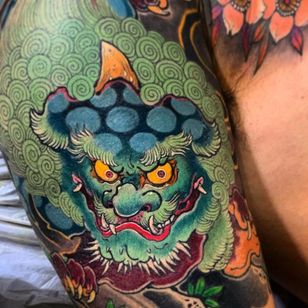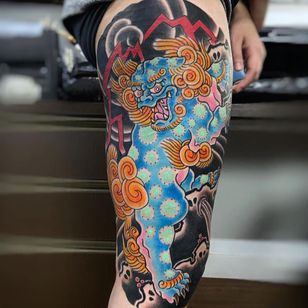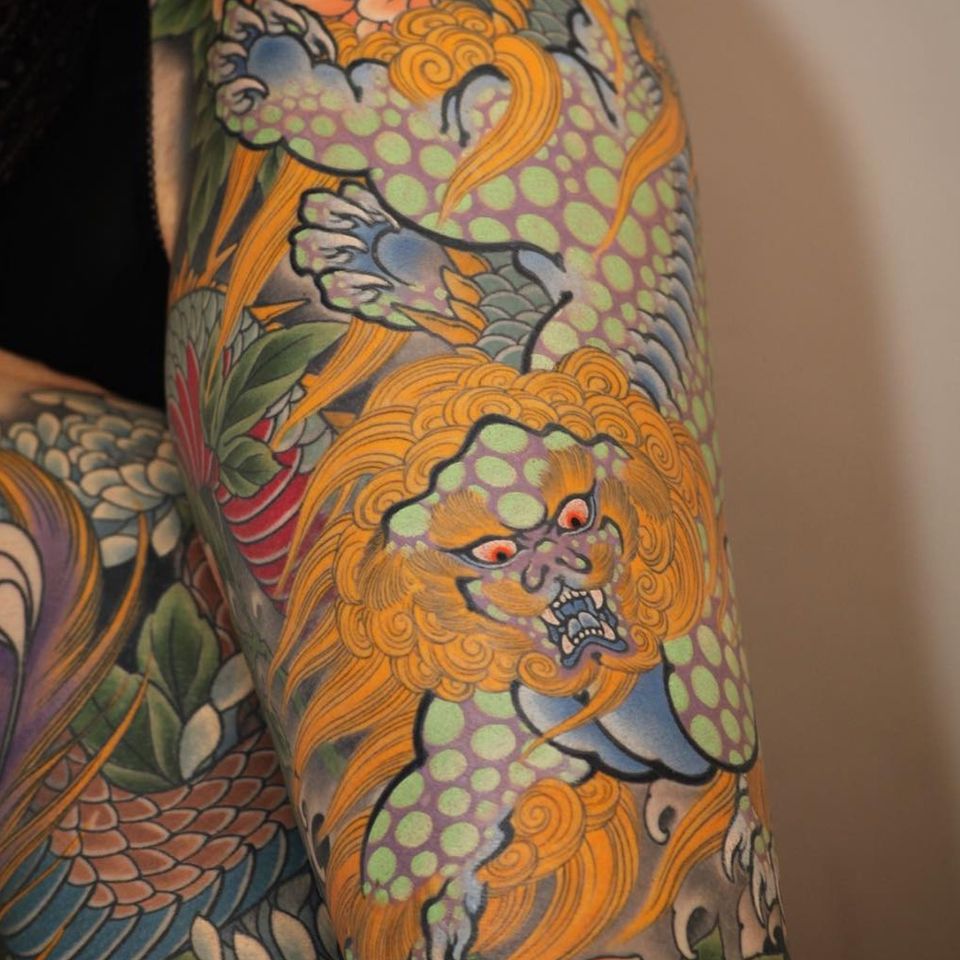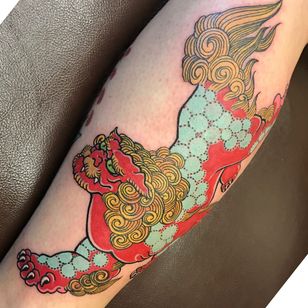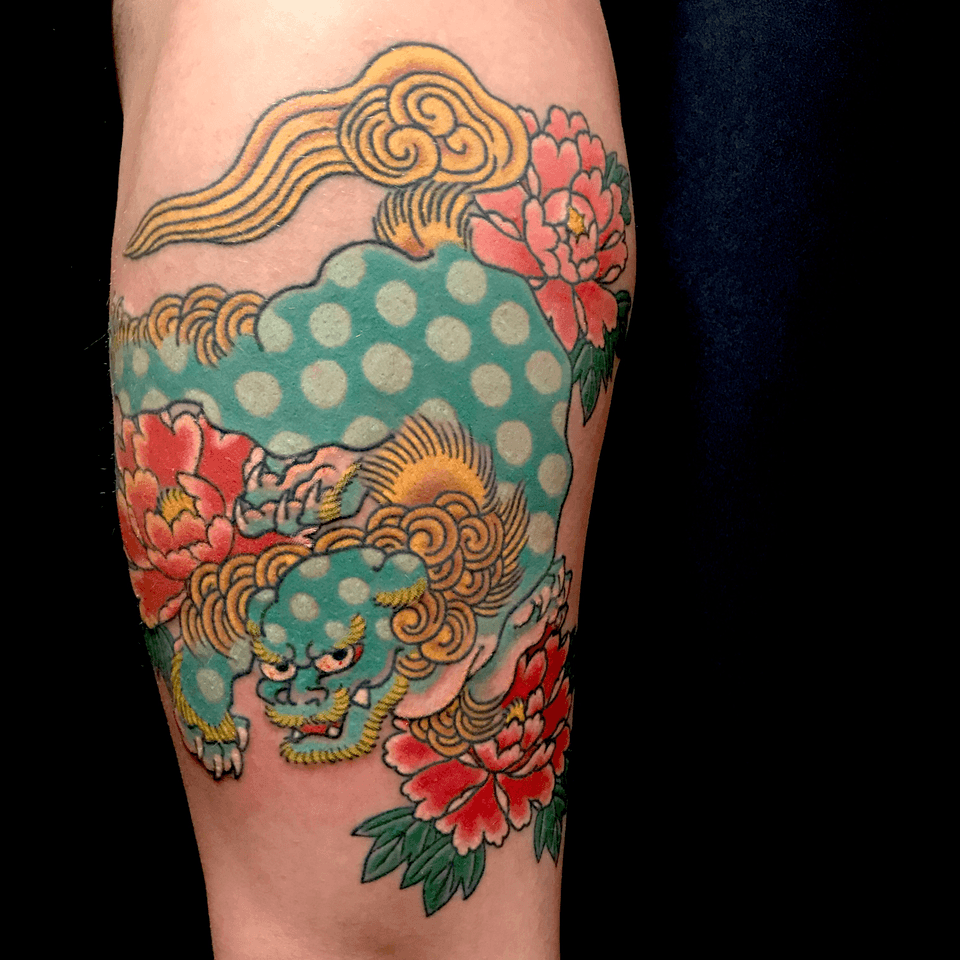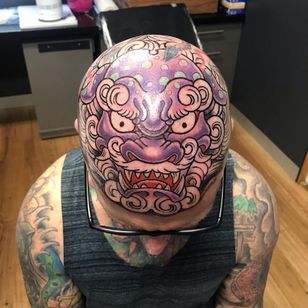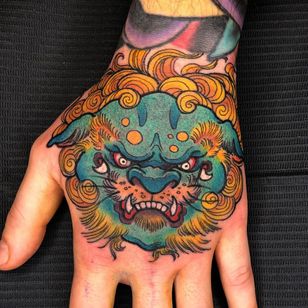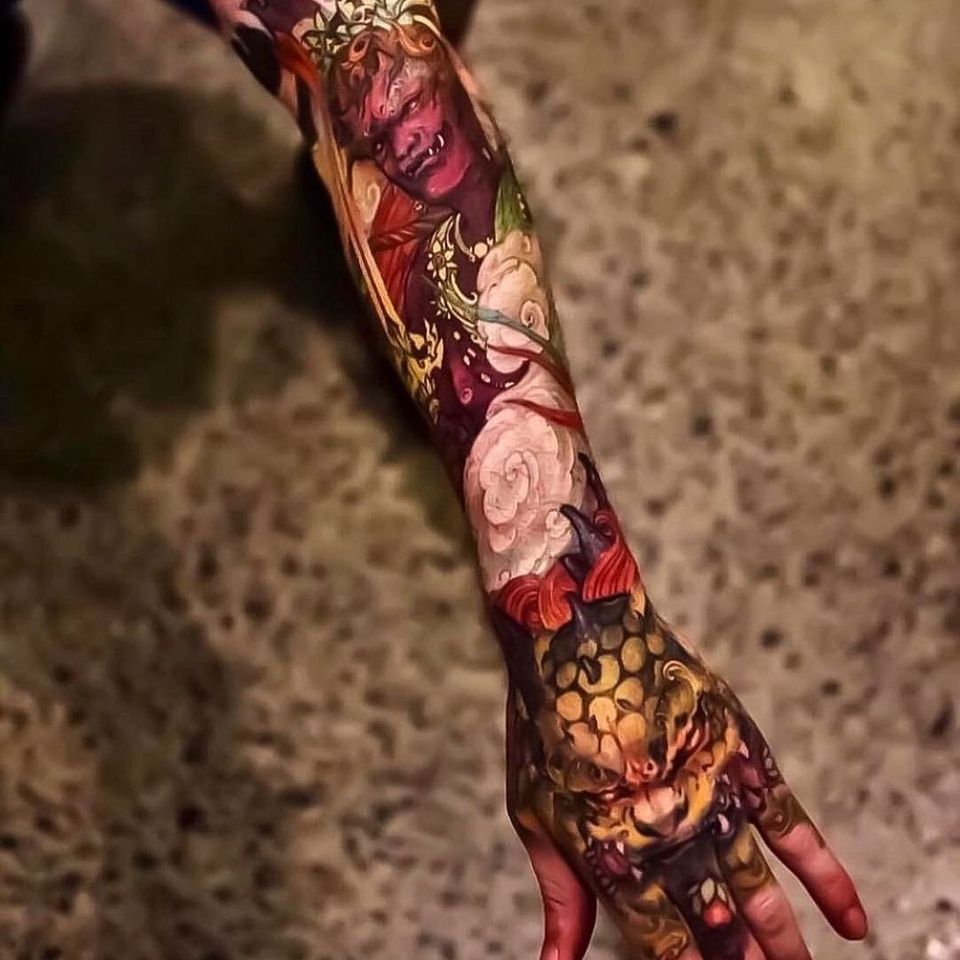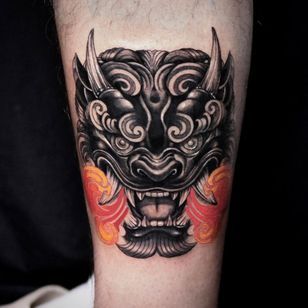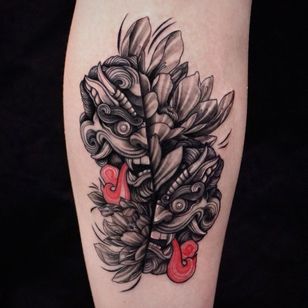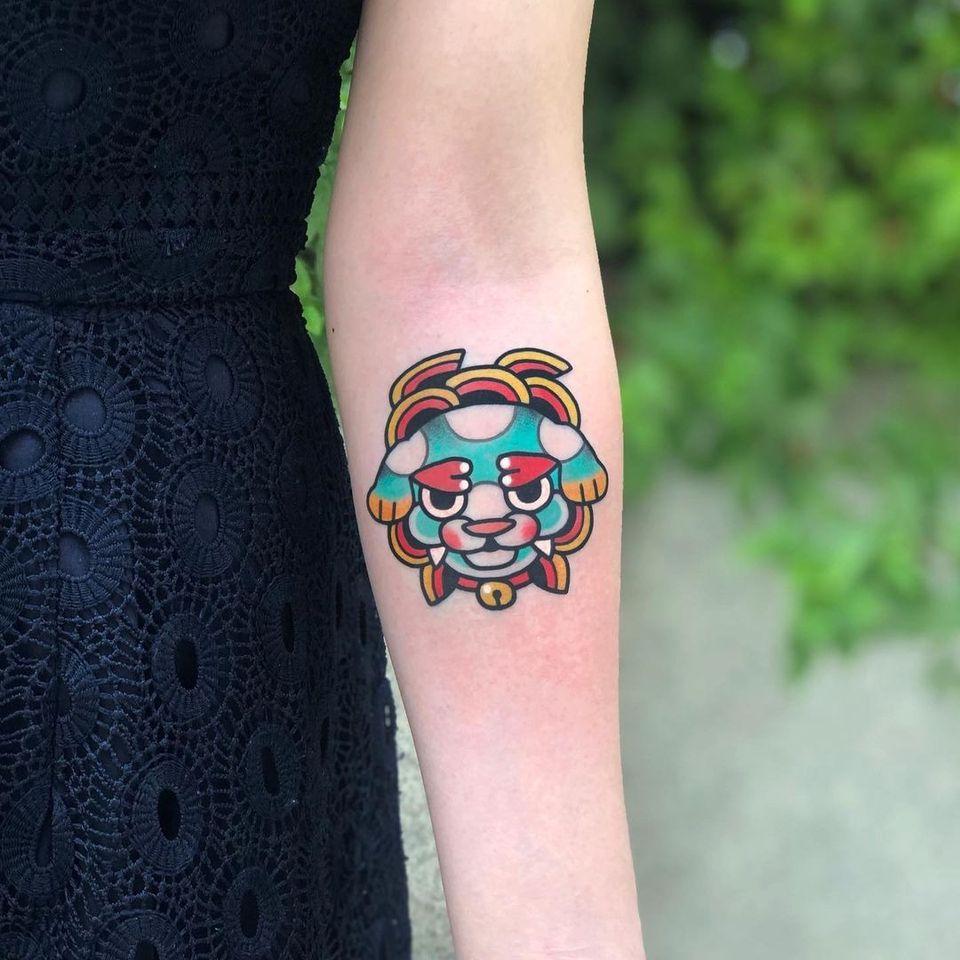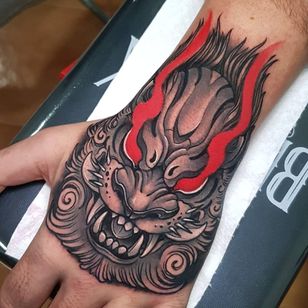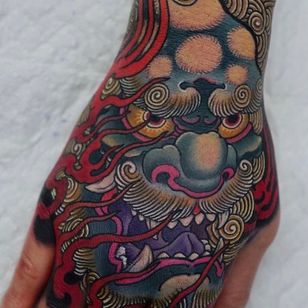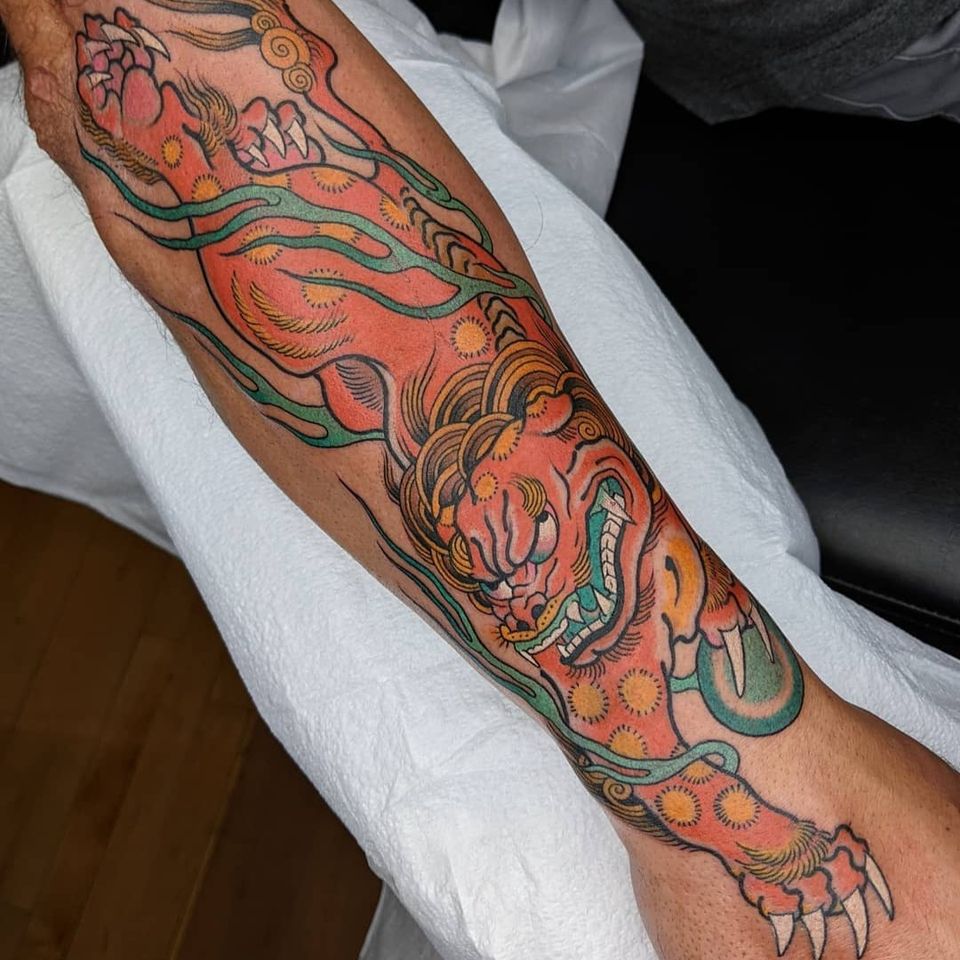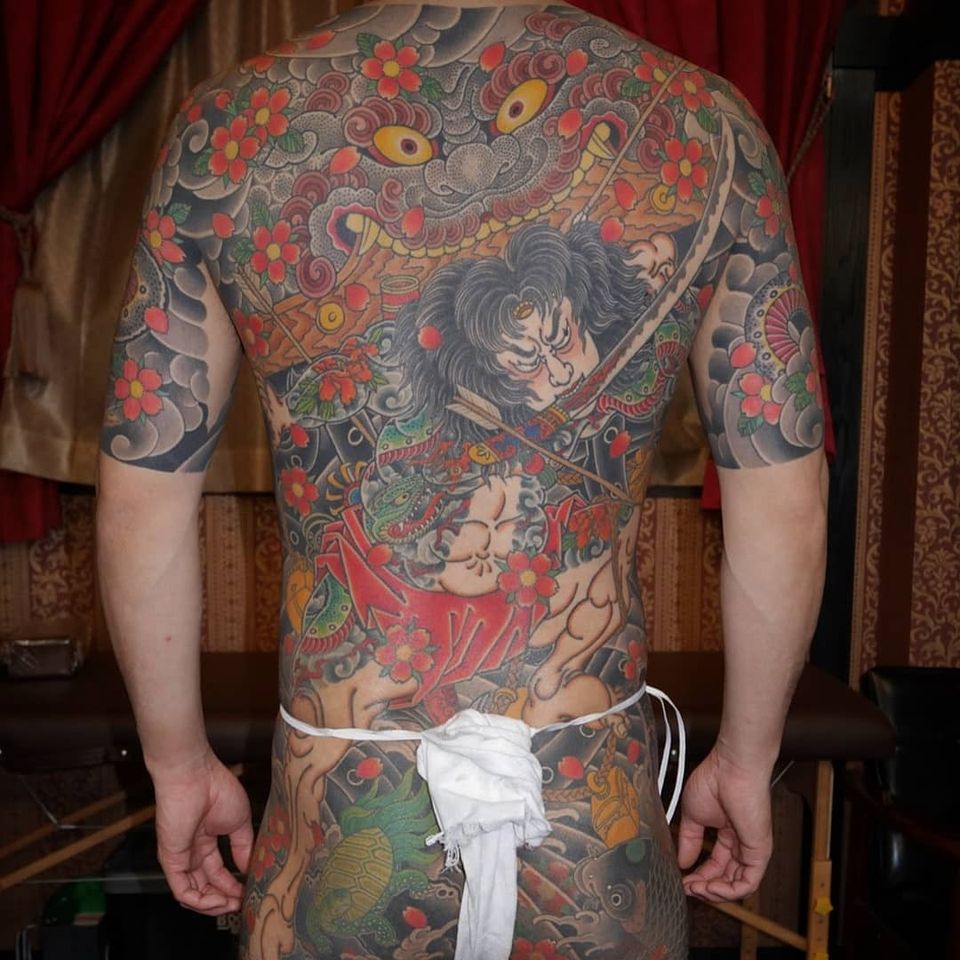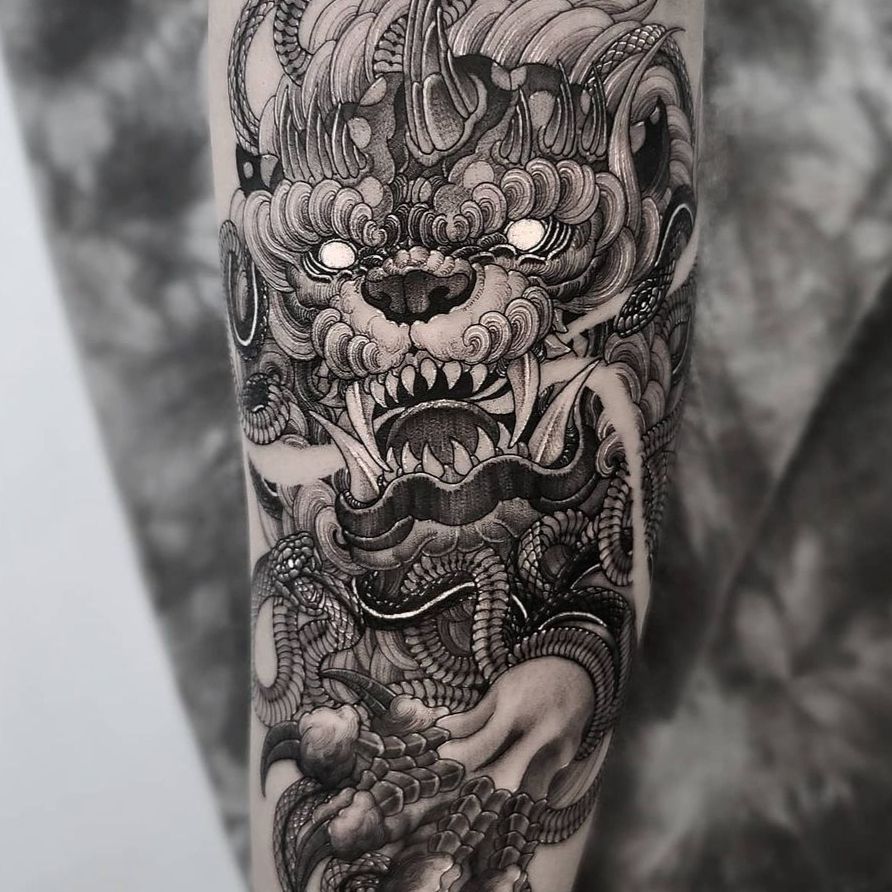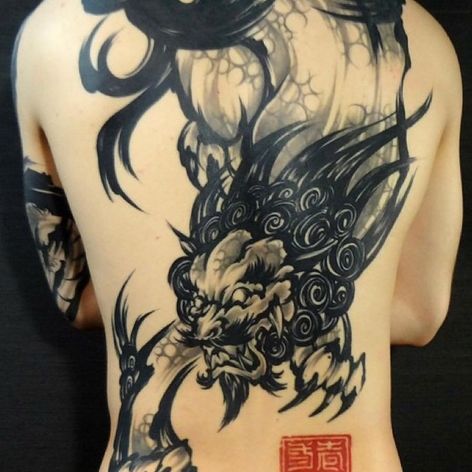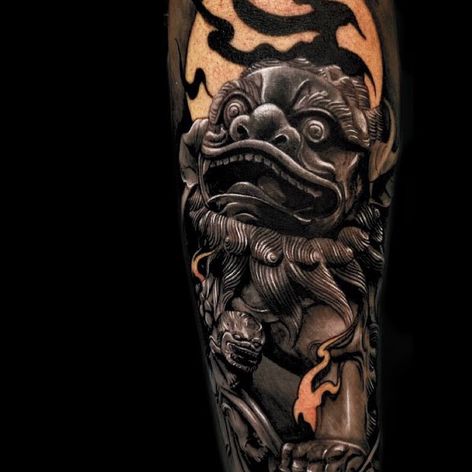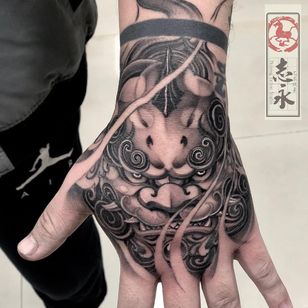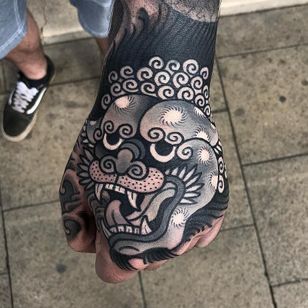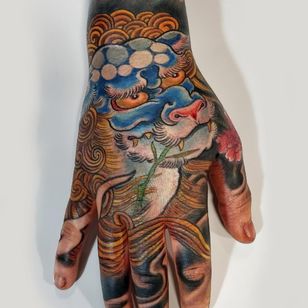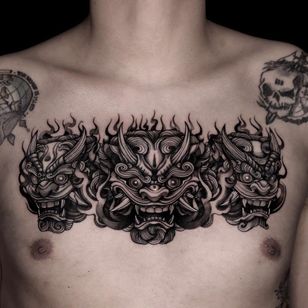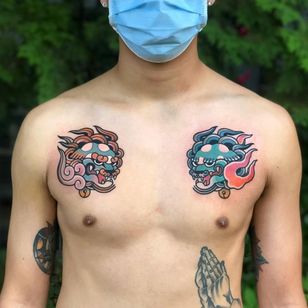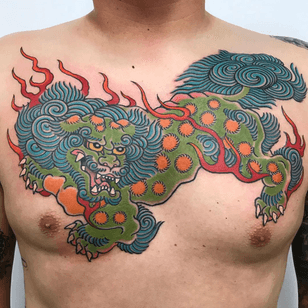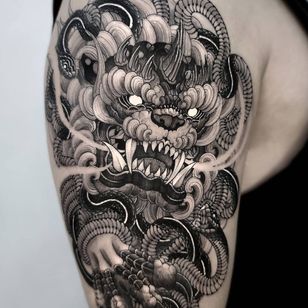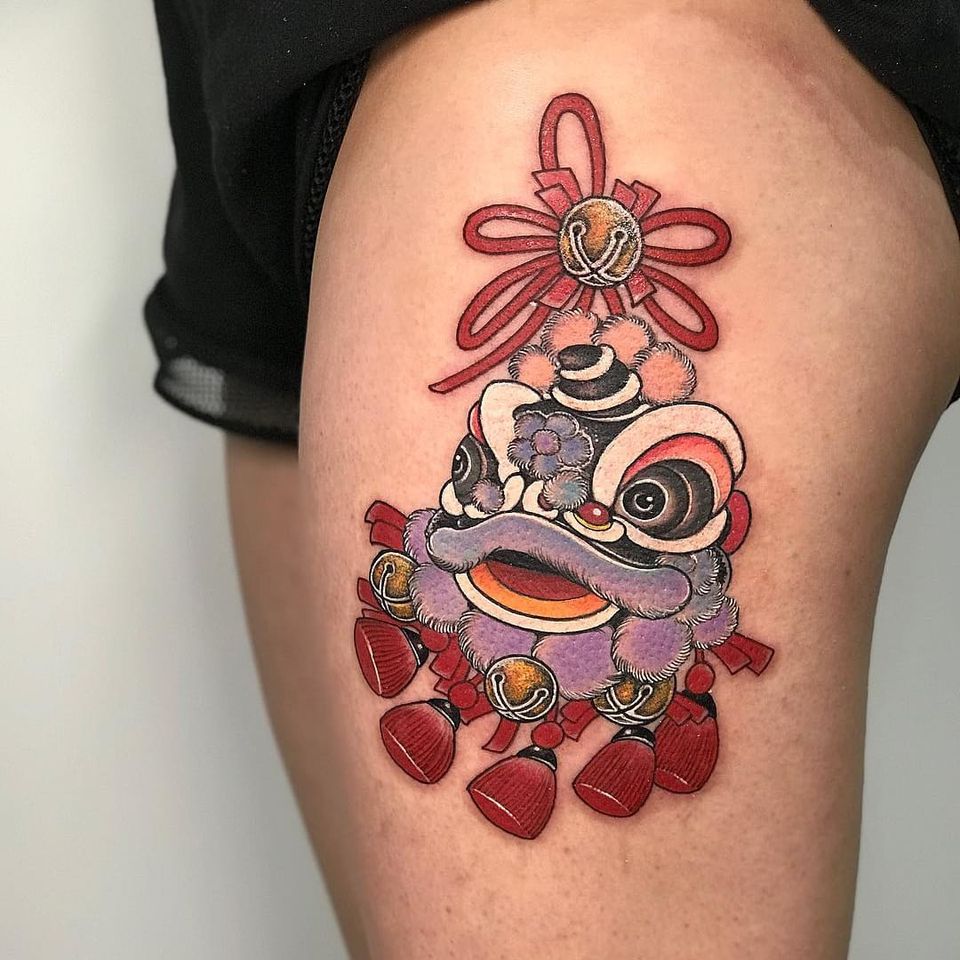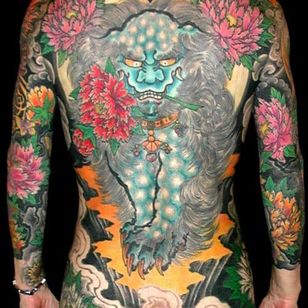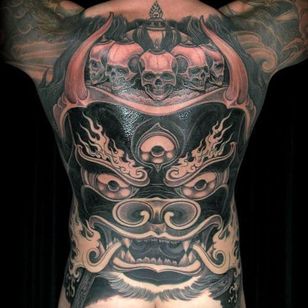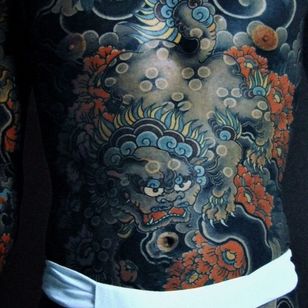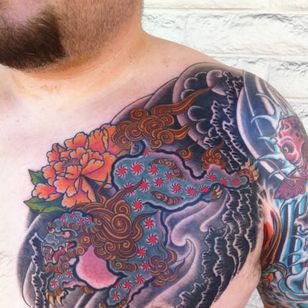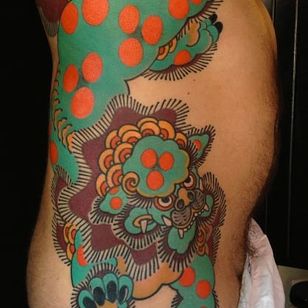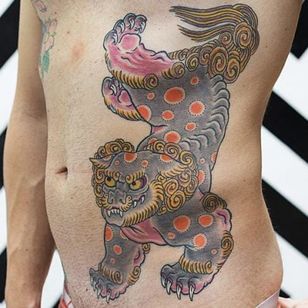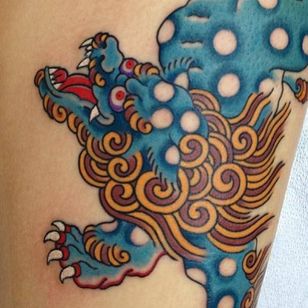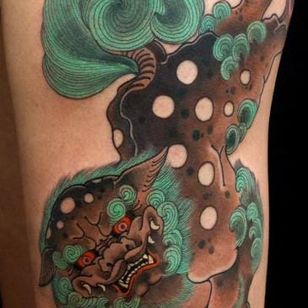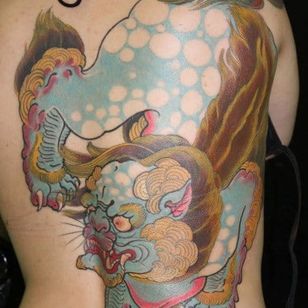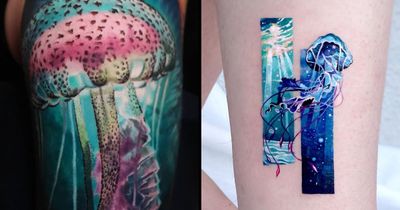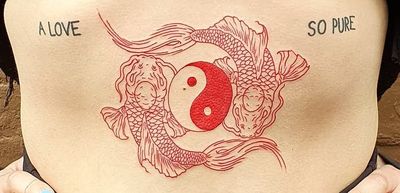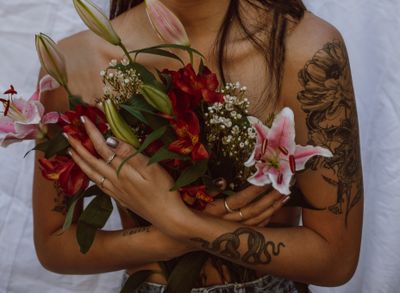20 Sublime Foo Dog Tattoos

Summary
These fierce and protective foo dog designs are sure to turn heads!
One of the most famous and favored designs of Japanese and Chinese art, Foo Dog tattoos, also known as 'The Lion of Buddha', are indeed lions and not dogs. Here we go in-depth behind this beloved creature.
Foo Dogs are most often shown in pairs and are viewed as guardians. Extensively depicted in both Asian art and tattooing, Foo Dogs were adopted by the royal family of China and used as a symbol of spiritual protection and imperial strength. Large Foo Dogs carved out of stone were placed at the entrances of palaces, temples, and other buildings of importance; standing like guards with honor and pride.
Many Foo Dog statues bear a resemblance to popular Chinese dog breeds and it is because of this that people assume Buddha’s lions are dogs. While most paired Foo Dogs are male, it is not uncommon to see a male and female Foo Dog placed together, as the male is said to represent heaven, and the female the earth.
Foo Dog tattoos are a popular oriental design and are frequently paired with other Asian symbols like flowers and dragons. Foo Dog tattoos are likewise a popular image in traditional Japanese tattooing and have found a place in many Irezumi style bodysuits and sleeves.
Foo dog tattoo by Johan Svahn #JohanSvahn #FooDog #foodogtattoo #karajishi #japanesetattoos #japanese #irezumi #japanesemythology #mythology
History of the Foo Dog Tattoo
Foo dogs first originated in China during the Han Dynasty; approximately around the year 208 B.C. Their creation is said to have been inspired after travelers on the Silk Road introduced live lions to the Han Court. Soon after the lion’s introduction to China, massive marble and granite statues were built in honor of the magnificent creatures; as they were believed to provide strong spiritual protection while promoting good fortune. During this era, lions were considered to be a valuable gift exchanged between royal and elite persons. They were highly valued and revered for their ferocity, loyalty, and regal disposition. Many prominent families along the Asian trade routes began to place these guardian lion statues in front of their temples, businesses, and homes. Eventually, their use became more widespread as cheaper versions of their likeness became available, allowing government buildings and less affluent homes to display their statues.
Symbolism of the Foo Dog Tattoo
Thanks to the foo dog's reputation as a bringer of peace and protector from evil, the image of these guardian lions has remained popular throughout many styles of tattooing. When it comes to exploring the foo dog tattoo meaning, there are several common reasons as to why people select this symbol for their body art. Many believe that a Chinese foo dog tattoo may provide powerful spiritual protection, while others select this design as a token of good luck, positive energy, or inner peace.
According to Feng Shui and Chinese tradition, foo dogs must always be placed in pairs to serve their true purpose; traditionally with one male lion on the right and one female lion on the left. The female lion is believed to symbolize “yin” energy; and works to protect the people inside of the structure, whereas the male lion represents “yang” energy; and is responsible for maintaining the safety and integrity of the building itself.
To tell the difference between a male or female foo dog you have to examine what lies beneath their paw. In depictions of female foo dogs, the paw is always shown resting atop her cub, symbolizing a sense of maternal instinct, protection, and a nurturing spirit. On the contrary, the male foo dog is showcased as having a ball beneath his paw, symbolizing the earth and control over circumstances.
In addition to gender-related symbolism, the position of the foo dogs' mouth is also used to convey special meaning. When shown in a pair, one foo dog’s mouth is always closed to symbolize keeping good spirits in, while the other is open to ward off evil. In Japan, the female is recognized as the keeper of benevolent spirits while the male is used to scare off negative forces.
Are Foo Dogs Chinese or Japanese?
Although Chinese and Japanese foo dogs are portrayed in the same manner, there are some subtle differences between the two cultures when talking about these mythical beings.
In Japan, Chinese guardian lions are referred to as “shisa” and they are believed to be powerful protectors in Okinawan mythology. These creatures appeared to be a mix between a lion and a dog and were inspired by the traditional Chinese foo dog statues. It was during the Edo period that the Japanese began to adopt the imagery and mythology of the foo dog.
One interesting difference between Japanese and Chinese foo dogs can be found in the symbolism of their mouths. In China, a pair of foo dogs are often shown with one mouth open and one mouth closed to represent the process of taking a breath, and they are often considered to mimic the “om” sound. In traditional Japanese folklore however; the male foo dog’s mouth remains open to scare off the bad energies while the female keeps her mouth closed as she is believed to hold in good spirits.
Another interesting difference to explore between the cultures is how they place protective foo dog statues outside their residences. In China, foo dogs have traditionally been placed as large statues outside of temples, palaces, and places of business; whereas the Japanese have chosen to place their “shisa” atop roofs or at gated entrances for optimal protection.
What is the Correct Name for Foo Dogs?
There are many different names that foo dogs go by. We've listed various names below!
Karajishi
This is the Japanese term for foo dogs. You may also see the term karajishi botan really often in Irezumi...this means food dogs and peonies! This is a favorite motif that Irezumi tattooists use for foo dog tattoo designs.
Foo dog tattoo by Tristan Zhang #TristianZhang #foodog #shishi #shi #guardianlion #Lion #mysticalcreature #mythicalcreature #deity
Chinese Guardian Lions
In China, foo dogs are described as Chinese guardian lions, and never referred to as “dogs”. Although they may appear similar to certain canine breeds like the Chow Chow or Shih Tzu, these mystical creatures were actually based upon real lions. Throughout history, Chinese guardian lions have been placed in front of the homes and businesses of Asia’s elite to protect against negative persons, energies, and spirits.
Stone Lions
Foo dogs are sometimes referred to as “stone lions” because of their historic depiction as statues along Asia’s trade routes. Traditionally made from granite and marble, the term stone lion was used to describe these majestic and protective creatures.
Foo dog tattoo by yub tattoo #yubtattoo #foodog #shishi #shi #guardianlion #Lion #mysticalcreature #mythicalcreature #deity
Shi and Shishi
Foo dogs are sometimes described as “shi” or “shishi”, which are Mandarin terms that translate to “lion”, and “stone lion”.
Fu Dogs
Outside of the “foo” spelling, Chinese guardian lions can also be referred to as “Fu Dogs”, or “Fu Lions”. This stems from Chinese transliterations of the words “fó” meaning Buddha, and “fú” meaning prosperity and good luck.
Foo dog tattoo by Zach Black #ZachBlack #foodog #shishi #shi #guardianlion #Lion #mysticalcreature #mythicalcreature #deity
Top Foo Dog Tattoo Styles
Irezumi Foo Dog Tattoos
Japanese foo dog tattoos possess a special cultural tie to the historic symbol while appearing visually fierce and expressive. In Japan, foo dogs are known as “shisa” and they are believed to be powerful guardians according to Okinawan mythology. When rendered in a traditional Irezumi style, shisa tattoos are often large-scale in nature and feature both the male and female lions.
Foo dog tattoo by horiso tajima #horiso tajima #foodog #shishi #shi #guardianlion #Lion #mysticalcreature #deity
Blackwork Traditional Foo Dog Tattoos
For those seeking a foo dog hand tattoo, or a smaller scale foo dog tattoo design, Blackwork Traditional styles work well to provide a strong and classic feel to this ferocious motif. Thanks to the heavy saturation that this style employs, your foo dog piece will be certain to stand out.
Foo dog tattoo by Pyo Ink #PyoInk #foodog #shishi #shi #guardianlion #Lion #mysticalcreature #deity
Black and Grey Foo Dog Tattoos
Whether you’re interested in a foo dog sleeve, or a foo dog back piece, Black and Grey styles work excellently to showcase these ancient and loyal protectors. This particular style looks incredible throughout a range of sizes spanning tiny tattoos to large-scale pieces.
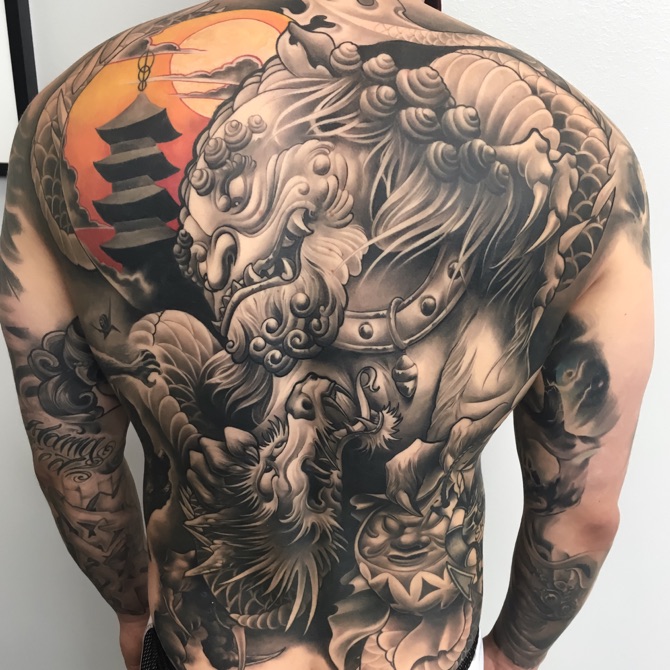
New School Foo Dog Tattoos
If you prefer modern styles, cartoonish renderings, bright colors, and distorted features, a New School style foo dog tattoo may be the right choice for you!
Foo dog tattoo by babyknowles #babyknowles #foodog #shishi #shi #guardianlion #Lion #mysticalcreature #deity
Best Placements for Foo Dog Tattoos
Back Foo Dog Tattoo
Foo dog back tattoos have remained a consistently popular placement thanks to the space that the back provides for additional design elements, large-scale detail, and intricate symbolism.
Hand Foo Dog Tattoo
The foo dog hand tattoo is believed to be an excellent talisman against evil and negativity; while helping to promote inner peace and tranquility for the wearer. Thanks to its highly visible placement, this design is often used to create a daily reminder for wellness and encourage a feeling of spiritual safety.
Chest Foo Dog Tattoo
If you’d like to showcase both the male and female foo dog within your design, a foo dog chest tattoo may be an ideal placement for you! Many who select this design place their foo dogs on corresponding sides of their body, with females on the left, and males on the right. This attention to placement helps to invoke the protective qualities of the Chinese guardian lion.
Arm Foo Dog Tattoo
Whether you’re interested in a foo dog forearm tattoo or a foo dog sleeve, the arm is a strong placement for this ancient and mystical design.
Leg Foo Dog Tattoo
From foo dog pairs featured on the thighs to detailed foo dog calf pieces, the leg is a great space to experiment with Japanese foo dog tattoo designs.
Tattoo by Miss Orange #MissOrange #ChineseTattoos #ChineseNewYear #LunarNewYear #Chinese #chineseart #China #foodog #shishi #puppet #bells #color
We hope these foo dogs tattoos have inspired you for your next tattoo! If you're interested in more Irezumi designs, check out our guide to the mythological creatures of Japan!


